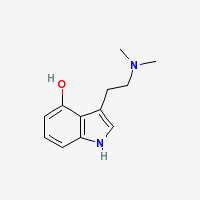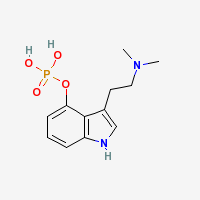Difference between revisions of "Psilocin and Psilocybin"
Endlessness (Talk | contribs) |
(→Dosages and consumption methods) |
||
| (3 intermediate revisions by one user not shown) | |||
| Line 6: | Line 6: | ||
| − | Some psychoactive mushrooms may have other active alkaloids such as [[Baeocystin]], and it is not really sure how different ratios of these alkaloids can affect the experience. Also certain mushrooms have been found with Phenetylamine, which though apparently inactive by itself, may be the reason for some tachycardia and other side-effects in some strains of | + | Some psychoactive mushrooms may have other active alkaloids such as [[Baeocystin]], and it is not really sure how different ratios of these alkaloids can affect the experience. Also certain mushrooms have been found with Phenetylamine, which though apparently inactive by itself, may be the reason for some tachycardia and other side-effects in some strains of psilocybin-containing mushrooms (ref Trout's Notes) |
There are other active mushrooms, such as Amanita muscaria and pantherina, which do not contain psilocin/psilocybin, but rather ibotenic acid/muscimol. These are completely different substances with different effects, not related to what is mentioned in this entry. | There are other active mushrooms, such as Amanita muscaria and pantherina, which do not contain psilocin/psilocybin, but rather ibotenic acid/muscimol. These are completely different substances with different effects, not related to what is mentioned in this entry. | ||
| Line 23: | Line 23: | ||
== Dosages and consumption methods == | == Dosages and consumption methods == | ||
| + | Microdose .1-.4g of dried mushrooms Used for mental clarity and alleviation of depression and anxiety in daily life. Dosing every third day is the recommended frequency. | ||
== History of usage == | == History of usage == | ||
== Analysis of Psilocin / Psilocybin == | == Analysis of Psilocin / Psilocybin == | ||
| + | |||
| + | |||
| + | http://www.anoniem.org/?http://www.justice.gov/dea/programs/forensicsci/microgram/journal_v4_num14/pg1.html | ||
== Scientific publications == | == Scientific publications == | ||
Latest revision as of 01:28, 6 October 2019
Contents
- 1 Brief overview - What is Psilocin / Psilocybin?
- 2 Chemical and physical properties
- 3 Effects
- 4 Pharmacology, toxicity and general safety
- 5 Mushrooms containing Psilocin / Psilocybin
- 6 Extraction teks
- 7 Dosages and consumption methods
- 8 History of usage
- 9 Analysis of Psilocin / Psilocybin
- 10 Scientific publications
- 11 Other links of interest
Brief overview - What is Psilocin / Psilocybin?
Psilocin (4-Hydroxy-Dimethyltryptamine, or 4-HO-DMT), and Psilocybin (4-Phosphoryloxy-Dimethyltryptamine, or 4-PO-DMT) are the main active alkaloids in "magic mushrooms".
Some psychoactive mushrooms may have other active alkaloids such as Baeocystin, and it is not really sure how different ratios of these alkaloids can affect the experience. Also certain mushrooms have been found with Phenetylamine, which though apparently inactive by itself, may be the reason for some tachycardia and other side-effects in some strains of psilocybin-containing mushrooms (ref Trout's Notes)
There are other active mushrooms, such as Amanita muscaria and pantherina, which do not contain psilocin/psilocybin, but rather ibotenic acid/muscimol. These are completely different substances with different effects, not related to what is mentioned in this entry.
Chemical and physical properties
For solubility, melting point, instabilities etc, check the Psilocybin and the Psilocin Chemical and Physical Properties WIKIs
Effects
Pharmacology, toxicity and general safety
Mushrooms containing Psilocin / Psilocybin
Extraction teks
Dosages and consumption methods
Microdose .1-.4g of dried mushrooms Used for mental clarity and alleviation of depression and anxiety in daily life. Dosing every third day is the recommended frequency.

